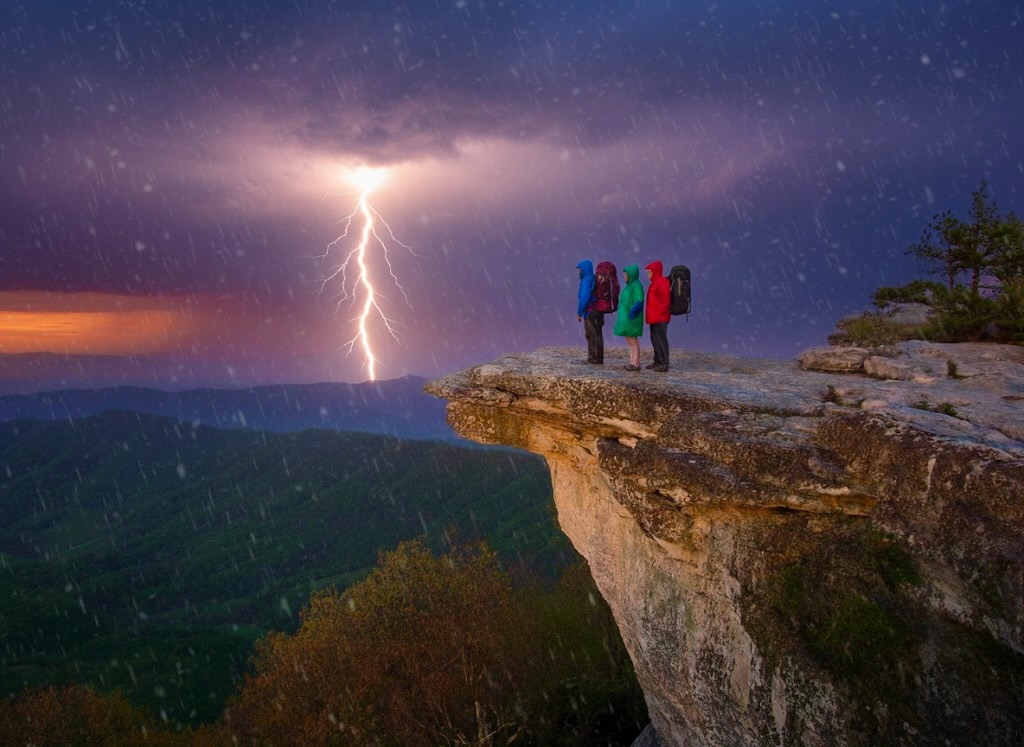



The Appalachian Trail (A.T.) is a celebrated long-distance hiking trail that extends nearly 2,200 miles (3,540 kilometers) from Springer Mountain in Georgia to Mount Katahdin in Maine. It traverses through 14 states, offering hikers a diverse range of natural landscapes and experiences. The trail is renowned for being one of the longest hiking-only trails in the world, drawing more than three million hikers annually who explore its various segments.
The concept for the trail was first proposed in 1921 by Benton MacKaye, and construction began shortly thereafter. The trail was completed in 1937, but since then, it has undergone continuous improvements and changes. In 1968, the trail was officially designated as the Appalachian National Scenic Trail under the National Trails System Act, which helped secure its protection and preservation as a national landmark.
Management of the Appalachian Trail is a collaborative effort involving the National Park Service, the United States Forest Service, and the nonprofit Appalachian Trail Conservancy. The trail is maintained by 31 trail clubs, each responsible for specific sections of the trail. These organizations work together to ensure the trail remains in good condition and accessible to hikers.
While most of the Appalachian Trail passes through remote forests and wildlands, it also includes sections that run through towns, roads, and farms. This blend of wilderness and human activity adds to the trail's unique character and provides hikers with varied experiences as they journey northward or southward.
Thru-hikers are those who attempt to complete the entire trail in a single season. This endeavor requires significant preparation and endurance. Since 2010, the number of thru-hikes has steadily increased, with 715 northbound and 133 southbound thru-hikes reported in 2017. The Appalachian Trail Conservancy estimates that over 3,000 people attempt to traverse the entire trail each year, with approximately 25% successfully completing the journey.
In addition to traditional thru-hiking, some hikers choose to complete the trail in both directions, known as a "yo-yo" hike. This challenging endeavor involves hiking the entire trail from one end to the other and then turning around to hike back. This approach adds an extra layer of difficulty and adventure to the hiking experience.
The Appalachian Trail is also connected to other long-distance trails. The International Appalachian Trail extends north from the A.T. into Canada and beyond, while the Eastern Continental Trail stretches south into the Southeastern United States, reaching Alabama and Florida. These affiliated trails contribute to the extensive network of hiking routes in North America.
The A.T., along with the Continental Divide Trail and the Pacific Crest Trail, forms the informal Triple Crown of Hiking in the United States. Completing all three trails is a prestigious achievement among long-distance hikers and represents the pinnacle of hiking accomplishment in the country.
The Appalachian Trail is home to a rich variety of flora and fauna. It hosts thousands of plant and animal species, including 2,000 rare, threatened, endangered, and sensitive species. The diverse habitats along the trail support a wide range of wildlife and plant life.
One of the most notable animals along the trail is the American black bear (Ursus americanus). Although black bears are among the largest animals found on the trail, encounters with hikers are rare, and the bears typically avoid human contact. Nonetheless, hikers are advised to follow proper food storage and safety practices to minimize the risk of bear encounters.